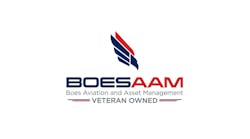Pratt & Whitney said Tuesday it expects its sales performance will bounce back after the coronavirus pandemic has passed, but without the number of workers who were on the job before the public health crisis.
Chris Calio, president of the jet engine manufacturer, told industry analysts at a meeting in East Hartford that it will “continue to drive significant structural cost reduction.”
“We think back to 2020, we did a combination of what I would call offense and defense,” he said at the gathering, the first organized by parent company Raytheon Technologies Corp. since it was created in a merger last year with United Technologies. The company “took some very, very difficult headcount action. No one wants to have to do that.”
“That said, we’ve been very, very clear with our organization that when we get back to 2019 sales levels we are not going back to 2019 headcount levels,’ Calio said.
Much of the sales growth will be driven by increased productivity and automation, he said.
Raytheon said in January it was cutting 16,500 commercial aviation jobs worldwide at Pratt & Whitney and Collins Aerospace, a 20% drop. In Connecticut, the job losses amounted to 450.
The conglomerate’s military businesses were not affected.
Pratt & Whitney also will reduce its footprint — which extends beyond Connecticut to Arkansas, Florida, Maine and Michigan and Europe and Asia — by 1.4 million square feet, or 7%.
“We’re now executing that and we are aggressively looking for more opportunities based upon what we see in our business,” Calio said.
Pratt & Whitney posted 2019 sales of $20.9 billion. The following year as travel restrictions forced by COVID-19 grounded airlines, Pratt & Whitney reported sales of $16.8 billion, down 20%.
Costs also will be reduced with Pratt & Whitney’s new manufacturing plant in North Carolina. Calio said it’s expected to generate $180 million in annual savings.
“Today a part has to travel 2,500 miles with eight hand-offs. When this is ready to go, we’ll all produce this in one factory,” he said.
Pratt & Whitney, which presented its outlook with other Raytheon businesses — Collins Aerospace, Raytheon Intelligence & Space and Raytheon Missiles & Defense — provided an upbeat forecast for the post-pandemic climate, even as commercial air travel improves slowly and military spending will register only small increases in the Biden administration.
“We will see growth, but it will be relatively slow,” said Gregory Hayes, chief executive officer of Raytheon Technologies. “Of course, where the real growth is going to come, it’s the recovery on the commercial side.”
Air passenger activity is 70% of 2019 levels, he said.
Calio strongly defended the F-35 Joint Strike Fighter outfitted with Pratt & Whitney engines. Speaking to industry analysts at parent company Raytheon Technology Corp.’s investor day gathering in East Hartford, he called the F-135 engine a “growth driver” for Pratt & Whitney.
The F-35, which is manufactured by Lockheed Martin Corp., is under attack by some in Congress for its cost and operational problems such as cybersecurity weaknesses. Rep. John Larson, D-1st, whose district includes Pratt & Whitney’s headquarters and a manufacturing plant, joined 131 congressional colleagues in April urging continued funding.
Pratt & Whitney delivered about 600 F-135 engines from 2016 to 2020 and expects the number to rise to more than 800 between this year and 2025.
Even in a “flat budget environment,” engines for the F-35, tankers and other military platforms are “critical to the growing threats and critical to the fleet refreshments that are out there today,” Calio said.
Stephen Singer can be reached at [email protected].
©2021 Hartford Courant. Visit courant.com. Distributed by Tribune Content Agency, LLC.



